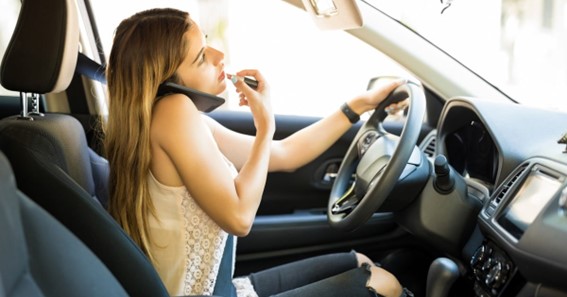Are you curious to know what is rubbernecking in driving? You have come to the right place as I am going to tell you everything about rubbernecking in driving in a very simple explanation. Without further discussion let’s begin to know what is rubbernecking in driving?
What Is Rubbernecking In Driving?
Rubbernecking, a term commonly used in driving contexts, refers to the act of excessively gawking or staring at something of interest while operating a vehicle. This behavior often leads to drivers taking their attention away from the road, causing distractions and potential hazards. In this blog, we will delve into what rubbernecking entails, its impact on traffic safety, and ways to mitigate its risks. Let’s explore the dangers associated with this behavior and promote safer driving habits.
Defining Rubbernecking:
Rubbernecking occurs when drivers divert their attention from the road ahead to focus on a specific event or object that captures their interest. It commonly happens in response to incidents such as accidents, construction sites, or unusual occurrences. The term “rubbernecking” derives from the tendency of drivers to crane their necks to get a better view, often causing slow-downs and disruptions in traffic flow.
Dangers Of Rubbernecking:
- Distraction: Rubbernecking diverts drivers’ attention from their primary task of driving safely. When drivers take their eyes off the road, even for a few seconds, it significantly increases the risk of accidents. Inattentiveness due to rubbernecking can prevent drivers from quickly responding to changes in traffic conditions or unexpected hazards.
- Reduced Reaction Time: By focusing on something outside the vehicle, drivers become less aware of their surroundings, making it harder to react promptly to sudden braking, lane changes, or other critical maneuvers. This delay in reaction time can lead to rear-end collisions or contribute to the chain reaction of accidents in congested areas.
- Traffic Congestion: Rubbernecking often causes unnecessary congestion on roadways. As drivers slow down to observe an incident or object, it creates a ripple effect, impacting the flow of traffic and potentially leading to gridlock. The resulting traffic backups can inconvenience other drivers, delay emergency services, and exacerbate the overall safety risks on the road.
Mitigating Rubbernecking Risks:
- Maintain Focus: As drivers, it is essential to remain focused on the road ahead at all times. Avoid the temptation to stare at incidents or objects that may distract your attention. Keep your eyes on the traffic, maintain situational awareness, and be prepared to react to changing conditions.
- Minimize Curiosity: While it’s natural to be curious about incidents or events happening on the roadside, consciously remind yourself of the importance of maintaining safety. Acknowledge that your curiosity should not compromise your responsibilities as a driver and the safety of yourself and others.
- Follow Traffic Laws: Adhering to traffic laws and regulations is crucial in preventing accidents and maintaining smooth traffic flow. Stay within speed limits, maintain a safe following distance, and avoid sudden lane changes or unnecessary maneuvers that can contribute to traffic congestion and accidents.
- Use Technology Wisely: In the age of smartphones and other electronic devices, it’s crucial to resist the urge to use them while driving. Distracted driving is a significant contributor to accidents. Set your devices aside or use hands-free features if necessary, but always prioritize the task of driving.
Conclusion:
Rubbernecking, the act of gawking or staring at incidents or objects while driving, poses significant dangers to traffic safety. By diverting attention from the road, drivers increase the risk of accidents, contribute to traffic congestion, and compromise the overall flow of traffic. As responsible drivers, it is crucial to prioritize safety, remain focused on the road, and resist the temptation to rubberneck. By fostering a culture of attentive driving, we can reduce accidents, congestion, and the associated risks, creating safer roads for everyone.
Get to know some more interesting facts on Petsbee
FAQ
Why Do People Rubberneck At Accidents?
Rubbernecking, also known as “accident gawking,” occurs when the driver cranes the neck to get a better view of an accident on the side of the road. Attention-grabbing bright lights of emergency vehicles can easily make scenes distracting for drivers.
What Is An Example Of Rubbernecking?
The term rubberneck describes what you do when you can’t help staring at something. People tend to rubberneck when they’re passing a car accident on the highway. You might rubberneck at a waiter who drops a huge tray full of glasses. Tourists are sometimes accused of stopping to rubberneck at unfamiliar sights as well.
What Is Slang For Rubbernecking?
This is sometimes also called accident gawking.
What Is The Effect Of Rubbernecking?
Rubbernecking is actually a major cause of distracted driving. Drivers who slow trying to catch a glimpse of a wreck create a ripple effect of congestion. Rubbernecking also creates a higher chance of additional accidents. According to researchers, rubbernecking is responsible for up to 16 percent of all accidents.
I Have Covered All The Following Queries And Topics In The Above Article
Is Rubbernecking Illegal
Rubbernecking Synonym
Rubbernecking Car
Why Is It Called Rubbernecking
Rubbernecking Psychology
Rubber Necking Urban Dictionary
Rubbernecking Traffic
Rubbernecking Song
What Is Rubbernecking In Driving
What is the full meaning of rubbernecking
What is rubbernecking in driving?
